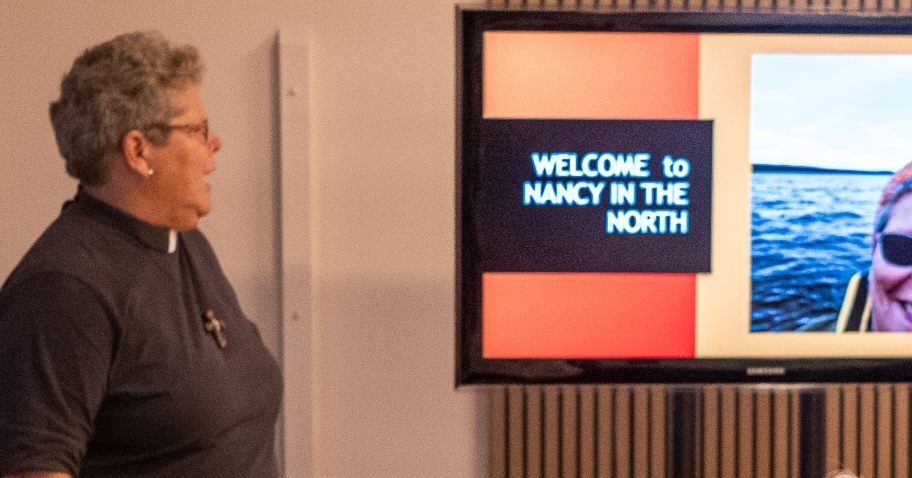Ministry in Mistissini


It was one year ago, in early September 2024, that Archdeacon Nancy first spoke to Bishop William about heading to the Diocese of Moosonee on a journey to one of the parishes that had been without a priest in a very long time. With the agreement of the members of St. Andrew's, and as part of the truth and reconciliation journey of our church, the Bishop of Moosonee chose the parish of St. John the Evangelist in the Cree First Nation of Mistissini. Archdeacon Nancy would spend the month of July there on Lake Mistissini in northern Quebec.
In one of the coldest summer months in recent memory, Nancy headed into northern Quebec with her dog Farley to pass a memorable four weeks as priest-in-charge at St. John the Evangelist, getting to know not only the members of her parish, but also of the not-so nearby church, St. Barnabas, in Waswanipi. Exploring the area, she engaged in many conversations about religion with people outside of our Anglican church family, having been encouraged by the people of St. John to wear her clerical collar when she was out and about in town. Nancy categorized the community as being very respectful, not only of outsiders but of each other.
The congregation of St. John the Evangelist took very good care of her. During her stay, she had unique opportunities to observe the distinctive James Bay Cree culture of that area of our North. The rectory where she stayed overlooked the bay where so many activities took place: fishing, fishing derbies, fitness challenges, and just daily life.
On Wednesday, September 24, St. Andrew's had a potluck dinner followed by a talk and a slide presentation by Archdeacon Nancy about her month in the north. About 40 people attended that event, and after her remarks, they peppered her with questions about life in Mistissini.
Some of the very interesting facts that we learned from her have been summarized below.
The languages spoken in Mistissini are Cree and English, and services at St. John were also bilingual, hymns sung and prayers recited in both Cree and English. Although the older generation went to residential schools, the community as a whole has made an effort to keep the Cree language central to their James Bay First Nation. A further focus is on a strong commitment to the education of their youth and to moving forward positively after the failures and harms of past governments.
As a result of the James Bay Hydro treaty agreement in the 1970s between the James Bay Cree and the Quebec government, the community invested wisely in good infrastructure and social programs: buildings such as the fitness centre with an Olympic-size pool, a modern school and daycare, a family court, and a health clinic with an ER and some hospital beds, a pharmacy and a dentistry.
Children are valued and protected in the community and are able to play freely outdoors at all times. Nancy said that there were a surprising number of children and that the average age of the community is 30.9 as contrasted with the median age of 40.6 in Ontario (and 56.5 in PEC).
Mistissini is a dry First Nation, but people do drive south to Chibougamau to buy liquor, so it is found in the community. Groceries are very expensive, obliging families to fill their freezers with fresh-caught fish from the lake, deer, goose, and moose, brought back by local hunters. The region surrounding the town is covered in forest, mainly black spruce, and rocks and rivers. Almost all of the families that are able to hunt and fish to fill their freezers bring back food for the elders and others who cannot. Hunting and fishing is part of their DNA and another way in which they continue to live out their heritage and traditional values as James Bay Cree.
In summing up, Archdeacon Nancy said that people in Mistissini were very grateful for her time there, and she has been invited by the Bishop of Moosonee to return to serve a month next summer. She is excited about the possibility of another northern adventure in ministry with the people of the Diocese of Moosonee.